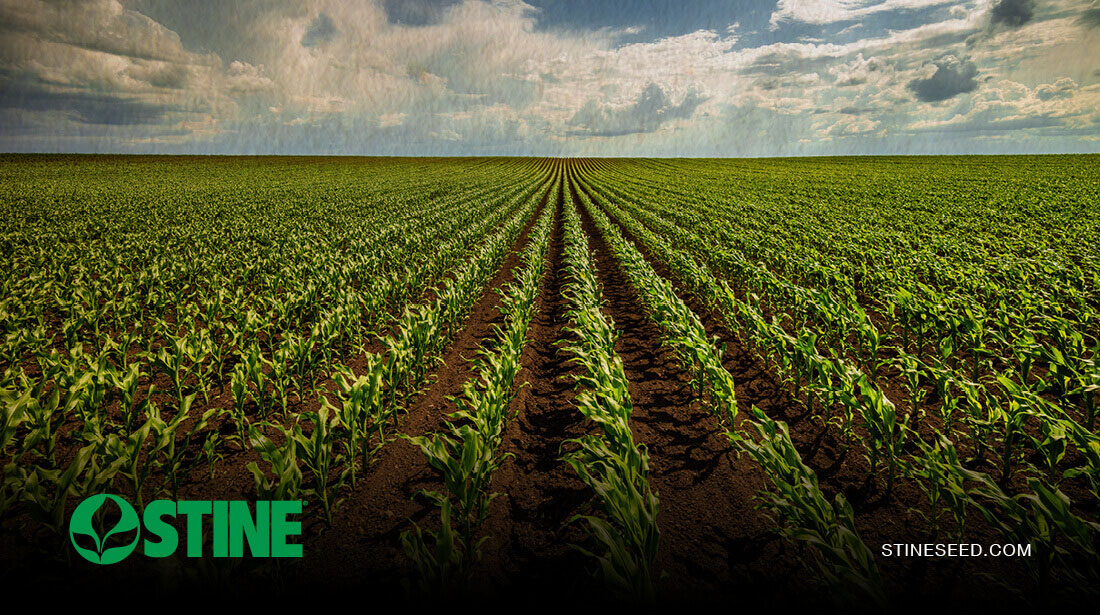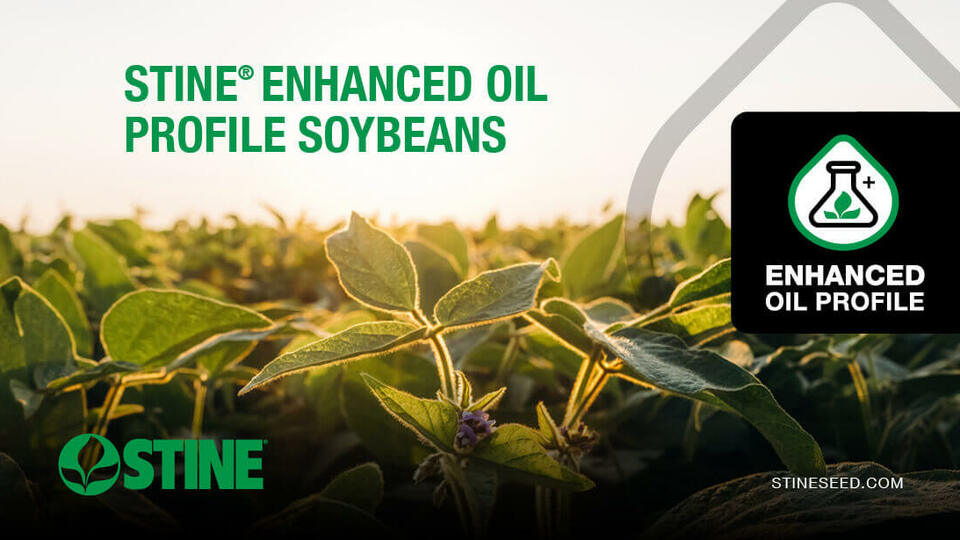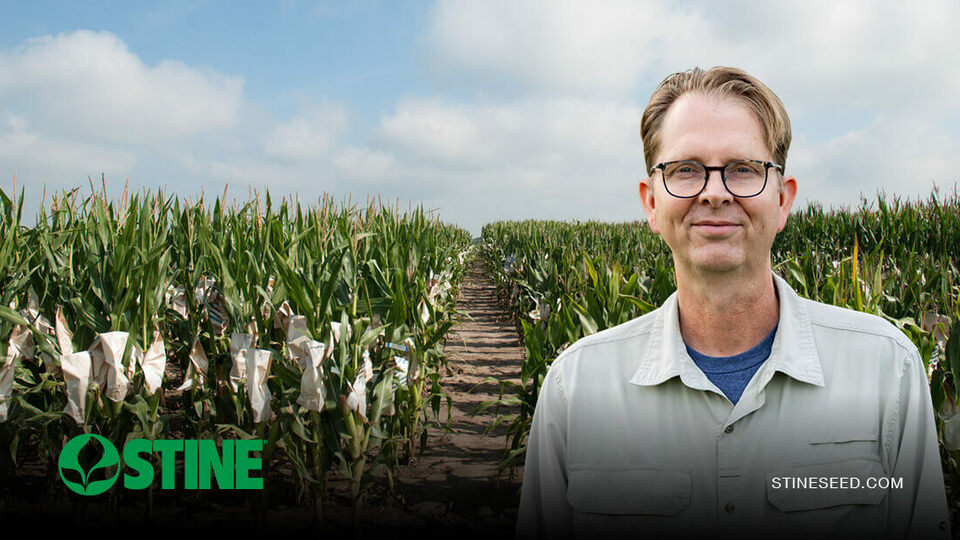Stine® Seed Company has long been a major player in the seed industry and a pioneer in developing short-stature corn. Our research on this revolutionary step in corn breeding began in the 1990s, focusing on planting populations and row widths.

Our initial aim wasn’t to produce shorter corn but to develop higher-yielding genetics that thrive in more dense populations to maximize yield per acre. Through trial and error, Stine’s breeding program eventually found the highest-yielding genetics produced shorter, more efficient plants. This early research paid off, leading us to develop short-stature corn hybrids well before our competitors.
“Today, about one-third of Stine’s corn lineup features shorter-stature hybrids. Hybrids in the 80- to 90-inch range that tend to prefer higher populations and that need greater management techniques yet handle stress well are considered shorter-stature in our system.”
Myron Stine, Stine Seed Company president
Stine’s research shows increasing corn yield requires packing more plants into each acre. While 38,000 to 42,000 is the common range for plants per acre today, Stine predicts those numbers will climb to the mid- to upper 40s for finished populations. That means smaller, shorter plants that produce less biomass aboveground.
Attributes of short corn include:
- A target height of 7 feet or less compared to 9–12 feet for regular corn
- Favorable ear height for excellent harvestability
- Ear size that is similar to current corn hybrids
- Plants that are more stable and handle wind events better, allowing farmers to plant them more densely for greater yields.
From the beginning, Stine’s work on short-stature corn wasn’t about producing shorter plants but achieving specific benefits by following the science. While many industry competitors have recently begun to recognize this trend, Stine has been leaning into the truth of the genetics for years.
“The plant naturally wants to move the ear closer to the tassel — it just makes sense. So that’s what we started getting. It took years to get here, but it’s ideal now.”
Myron Stine, Stine Seed Company president
In 1996, the average height of Stine’s hybrids was roughly 105 to 110 inches. Today, they are trending around 90 inches for 105- to 115-day relative maturity hybrids. In fact, even our tallest hybrids are still shorter than most of our competitors’.
Short-stature corn is a dramatic and promising change in plant architecture that Stine has been working toward for more than three decades.
Here are some important benefits of short-stature corn, based on over 30 years of Stine research:
- Reduced planting distances. Short-stature corn, with its more upright leaves and sturdier stalks, can be planted closer together without sacrificing yield. This is a game-changer for farmers with limited land or those seeking to maximize production on existing fields.
- Smaller tassels. Short corn varieties have smaller tassels that cast less shade on lower leaves, allowing for better light capture and increased grain production.
- Lower risk of lodging. With a lower center of gravity and thicker stalks, short-stature corn is less likely to fall over during high winds or yield-damaging storms.
- Ideal spacing for pollination. The distance between the tassel and uppermost ear on short corn varieties is shortened, which helps improve pollination.
- Higher-density planting. This increases the number of ears per acre resulting from higher plant populations.
- Narrower row spacing. The amount of space a corn plant has on all four sides is more consistent in Stine short corn.
- In-season access. Farmers can apply fertilizer or fungicide to short corn varieties with tractors rather than planes. This helps reduce environmental impacts from drift. It also gives farmers better access to the corn throughout the season.
- Better erosion control. Rain is less likely to penetrate narrower rows and denser canopies. This, coupled with equidistant plant spacing, can lessen water channeling, potentially reducing erosion.
Traditionally, taller corn has been considered ideal for maximizing yield. Short-stalk corn challenges this notion — which is one reason why Stine has been selling these hybrids commercially for more than a decade.
President Myron Stine says short-stature hybrids offer a potential 10% yield boost at higher plant populations.
“Just because it is a short-stature hybrid doesn’t mean it has to be planted at higher populations,” he says. “But our hybrids tend to like higher populations.”
Stine’s research shows more equidistant spacing raises yields an average 3% to 9%, and that's just the start. Proper fertility, including regularly scheduled nitrogen applications, can boost yields another 10% to 20%.
“The reality is, we don’t really care if the corn is short or tall, but we have found as we push genetics to their highest potential, and as we yield-screen brand-new genetics every year, the high-yielding, high-performing ones tend to be shorter than most of the genetics available out there.”
Myron Stine, Stine Seed Company president
Short-stature corn represents a significant leap forward in corn breeding, and Stine has been at the forefront for decades. Our dedication to research and development has resulted in a product that improves standability, increases potential yield and optimizes land use.
As short corn hybrids continue to gain traction, there’s no question that Stine not only invented short corn but also perfected it.
For more agronomic insights, visit StineSeed.com or connect with your local Stine sales representative.
Related Articles
-

Use Stine’s XP® seed treatments to prevent early injury to your crops
December 2025 in Agronomy
-

Understanding Stine’s enhanced oil profile soybeans
December 2025 in Agronomy
-

Soil sampling sets the stage for spring
November 2025 in Agronomy
-

Corn production growth paves way for more high-performing Stine® hybrids
November 2025 in Agronomy



